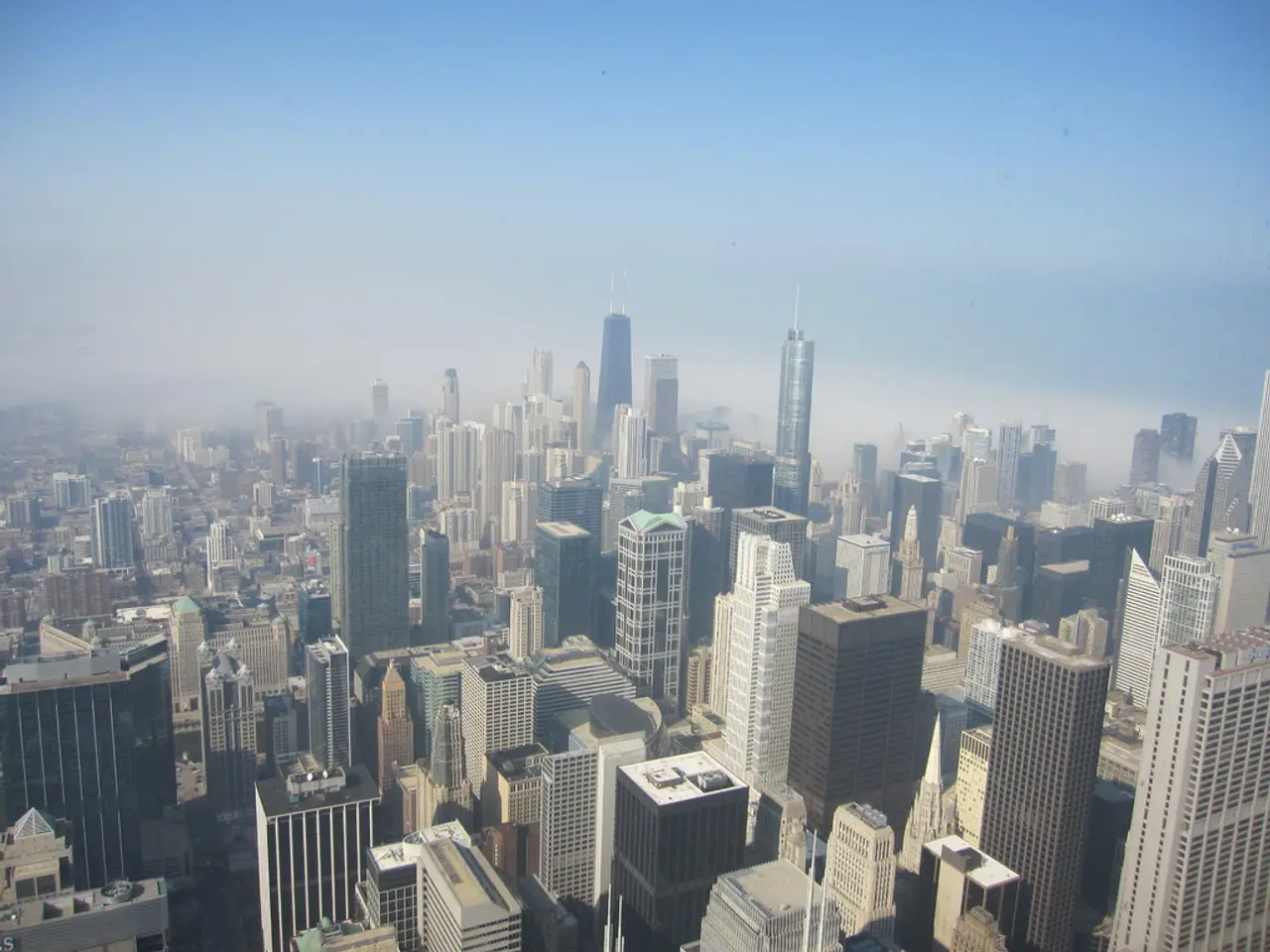List of the World's Tallest Structures Soaring Skyward
Energy-Efficient Giants: The World's Most Sustainable Skyscrapers
In the realm of architectural innovation and sustainability, some of the world's tallest buildings are setting new benchmarks for energy efficiency. Here are a few standout examples:
Merdeka 118
Standing tall in Kuala Lumpur, Malaysia, at 682 meters (2,238 feet), Merdeka 118 is a triple-platinum certified beacon of international sustainability. The building's design seamlessly blends Malaysia's rich cultural heritage with sustainable practices, making it a remarkable addition to the city's skyline.
Shanghai Tower
Located in Shanghai, China, the Shanghai Tower reaches 632 meters (2,073 feet) into the sky. Its double-layered glass facade is a testament to its energy efficiency, regulating internal temperatures and maximizing natural light, thereby reducing energy consumption.
Burj Khalifa
The Burj Khalifa, located in Dubai, UAE, currently holds the title as the world's tallest building at 828 meters (2,722 feet). Despite its size, the Burj Khalifa boasts an advanced cladding system designed to minimize energy consumption. However, it will soon be surpassed by the Jeddah Tower.
Jeddah Tower (Under Construction)
The Jeddah Tower, currently under construction in Jeddah, Saudi Arabia, is set to surpass the Burj Khalifa with a height of over 1,007 meters (3,308 feet). This architectural marvel is engineered with cutting-edge sustainable features, aiming to set new standards in energy efficiency and sustainability.
Empire State Building
In New York City, the iconic Empire State Building, standing at 381 meters (1,250 feet), has achieved a gold LEED certification. This demonstrates that even older buildings can be transformed into environmentally friendly structures through upgrades.
While climbing these towering structures is a challenge, it can also be a calorie-burning activity. For instance, battling the stairs at a normal pace at One World Trade Centre in Manhattan would burn approximately 378 calories, equivalent to consuming 100 grams of blueberry muffin. Similarly, a leisurely climb to the 89th floor of the Ping An International Finance Centre in Shenzhen, China, would burn around 347 calories, equivalent to a bacon sandwich.
Other notable skyscrapers include Landmark 81 in Ho Chi Minh City, Vietnam, which stands at 461.2 meters (1,513 feet) and redefines urban living with offices, apartments, and a luxurious hotel. The Lotte World Tower in Seoul, South Korea, reaches 555.7 meters (1,823 feet) and houses a mix of commercial spaces, offices, residences, and a luxury hotel. Lastly, the Ping An International Finance Centre in Shenzhen, China, is a 599.1-meter (1,966 feet) tall architectural marvel, offering corporate offices, high-end retail spaces, and observation decks with panoramic city views.
These buildings serve as a testament to the fact that energy efficiency can be achieved in tall structures through innovative materials, sustainable design principles, and advanced technologies.
Instead of focusing solely on their impressive heights, these buildings also excel in the realm of lifestyle, with the Merdeka 118 blending Malaysia's heritage with sustainable practices in fashion-and-beauty, food-and-drink, home-and-garden, and travel experiences. Similarly, the Ping An International Finance Centre in Shenzhen, China, offers high-end retail spaces, making it a prime destination for fashion enthusiasts. Furthermore, these towering structures, such as the Empire State Building in New York City, prioritize food-and-drink offerings, ensuring that visitors, whether climbing the stairs for workout purposes or enjoying the city views, can indulge in delicious meals while maintaining their energy-efficient lifestyles.




